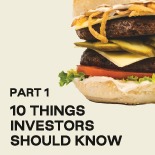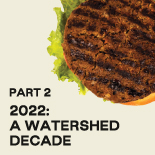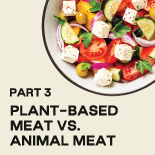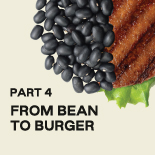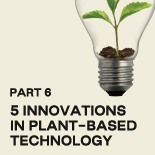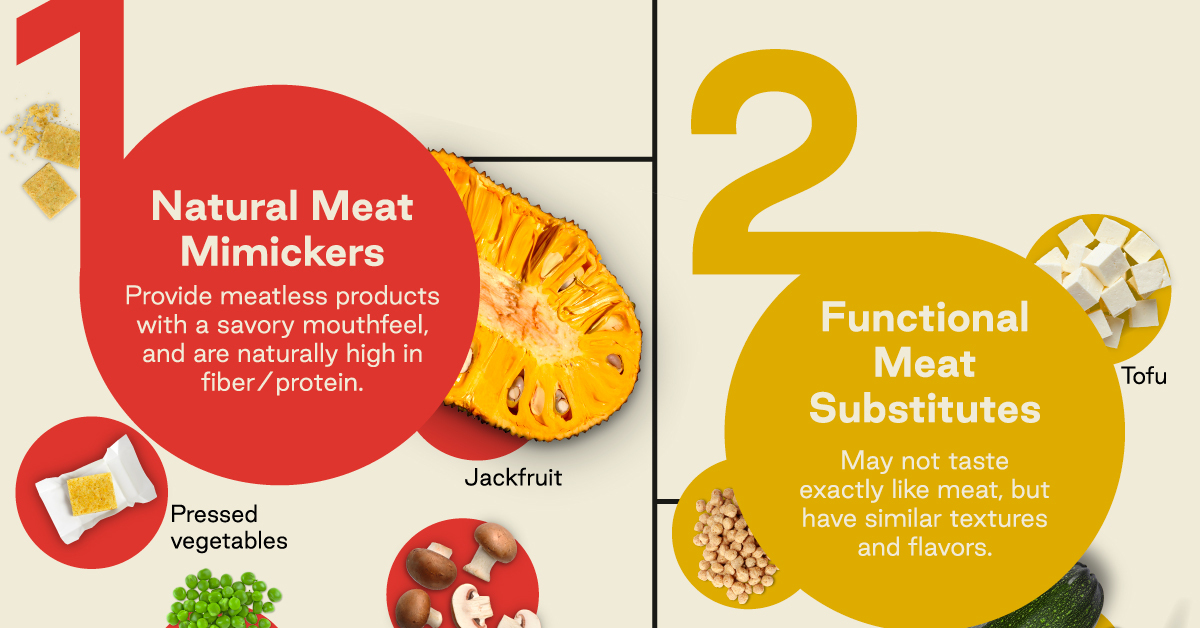Exploring The Consumer Potential of Plant-Based Alternatives
Exploring The Consumer Potential of Plant-Based Alternatives
Plant-based alternatives have exploded in recent years, and by 2030 the total market value is predicted to surpass a whopping $161 billion. The steady growth of this market goes hand-in-hand with another trend: consumers are increasingly being spoilt for choice.
Alternatives products are expanding and evolving in order to offer the same variety as the conventional meat market. Innovative technologies are helping new plant-based products rival animal products in look, taste, texture, and even nutrition.
This infographic from the Very Good Food Company (VGFC) provides a detailed look at the range of plant-based alternatives that could take the market’s consumer potential to the next level.
The Universe of Plant-Based Alternatives
There are four major categories for plant-based meat: natural meat mimickers, functional meat substitutes, meatless meat, and vegetable-forward products. How do they stack up?
| Natural meat mimickers | Provide meatless products with a savory mouthfeel, and are naturally high in fiber /protein | Examples: Legumes e.g. beans peas, lentils, pressed vegetables, mushrooms, jackfruit |
| Functional meat substitutes | May not taste exactly like meat, but have similar textures and flavors | Examples: Textured vegetable protein e.g. soya chunks, Unprocessed binders e.g. zucchini, carrot, coconut, beans, tofu, tempeh, seitan |
| Meatless meat | Replicates meat’s typical characteristics, sometimes by combining natural meat mimickers and functional meat substitutes | Examples: Impossible Burger, Beyond Burger These products appeal to "flexitarian" consumers, but can be highly processed |
| Vegetable-forward | Doesn’t try to replicate meat exactly, and are usually made only with vegetables and binders | Vegetable burgers |
In addition, consumers are increasingly considering the entire supply chain of how a plant-based product goes from bean to burger, into their purchasing decisions.
Massive Market Potential
However, plant-based meat is only one piece of the puzzle contributing to the consumer potential of the industry. Many consumers are also now opting for plant-based alternatives to other products that typically come from animals, from dairy and eggs to honey and gelatin.
- Dairy alternatives🥛🧀
Plant-based milk, butter, and cheese can be made from nuts (almond, cashew), while other varieties come from oat, soy, avocado, and peas - Eggs🥚
Natural alternatives include tofu, but recent products have been made from legumes such as mung beans, with turmeric or carrots for color - Honey🍯
Natural alternatives include maple syrup, or concoctions made from apple juice and sugar - Gelatin🦴
Natural alternatives such as agar agar are made from algae or seaweed
The plant-based industry is brimming with new avenues for demand. But to truly reach a wide range of consumers, all these alternatives must also be appetizing and affordable.
Click here to learn how the Very Good Food Company is poised to become a global leader in the space with its great tasting and affordable variety of organic options.

-

 Sponsored3 years ago
Sponsored3 years agoMore Than Precious: Silver’s Role in the New Energy Era (Part 3 of 3)
Long known as a precious metal, silver in solar and EV technologies will redefine its role and importance to a greener economy.
-

 Sponsored7 years ago
Sponsored7 years agoThe History and Evolution of the Video Games Market
Everything from Pong to the rise of mobile gaming and AR/VR. Learn about the $100 billion video games market in this giant infographic.
-

 Sponsored8 years ago
Sponsored8 years agoThe Extraordinary Raw Materials in an iPhone 6s
Over 700 million iPhones have now been sold, but the iPhone would not exist if it were not for the raw materials that make the technology…
-

 Sponsored8 years ago
Sponsored8 years agoThe Industrial Internet, and How It’s Revolutionizing Mining
The convergence of the global industrial sector with big data and the internet of things, or the Industrial Internet, will revolutionize how mining works.

